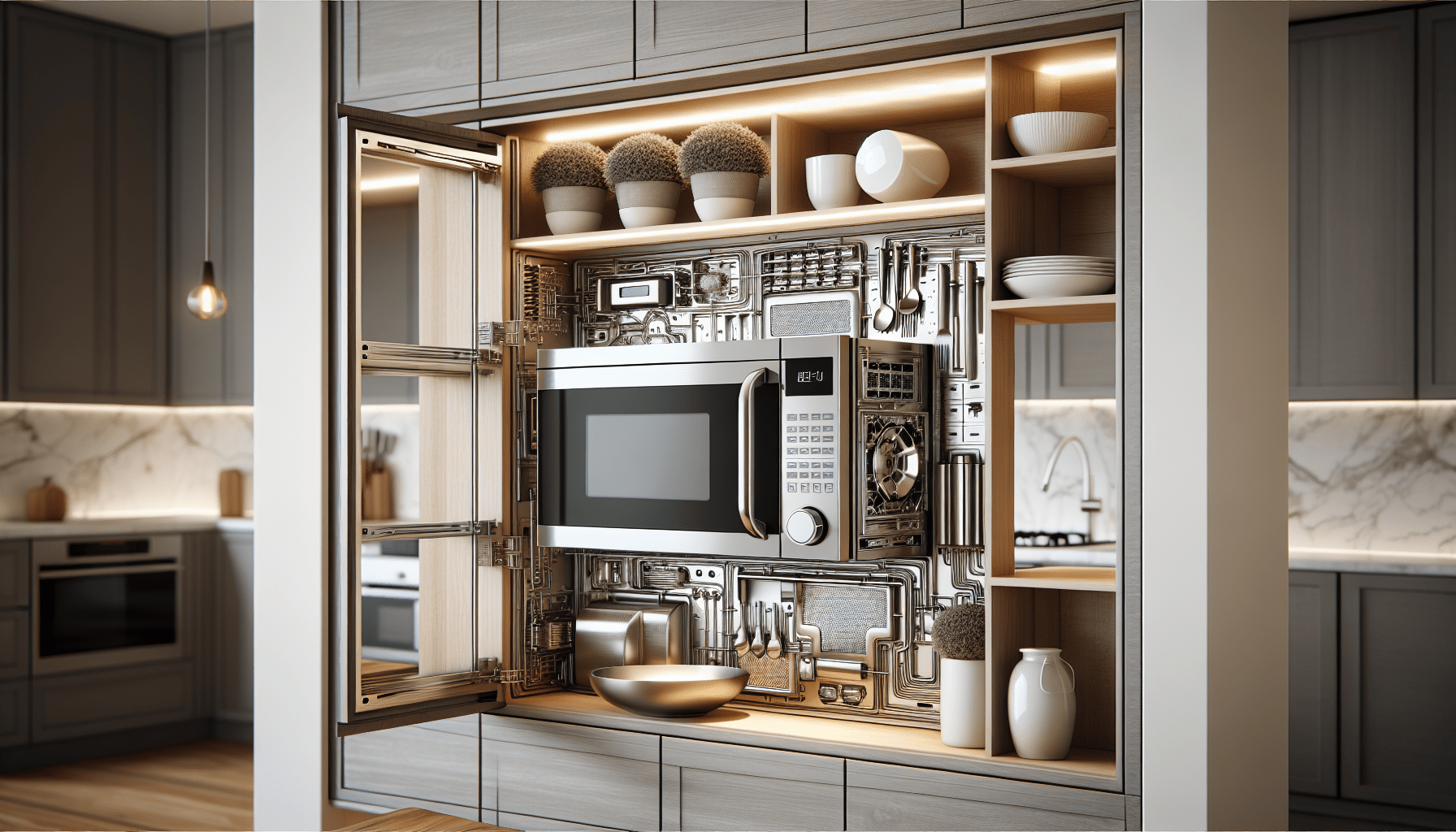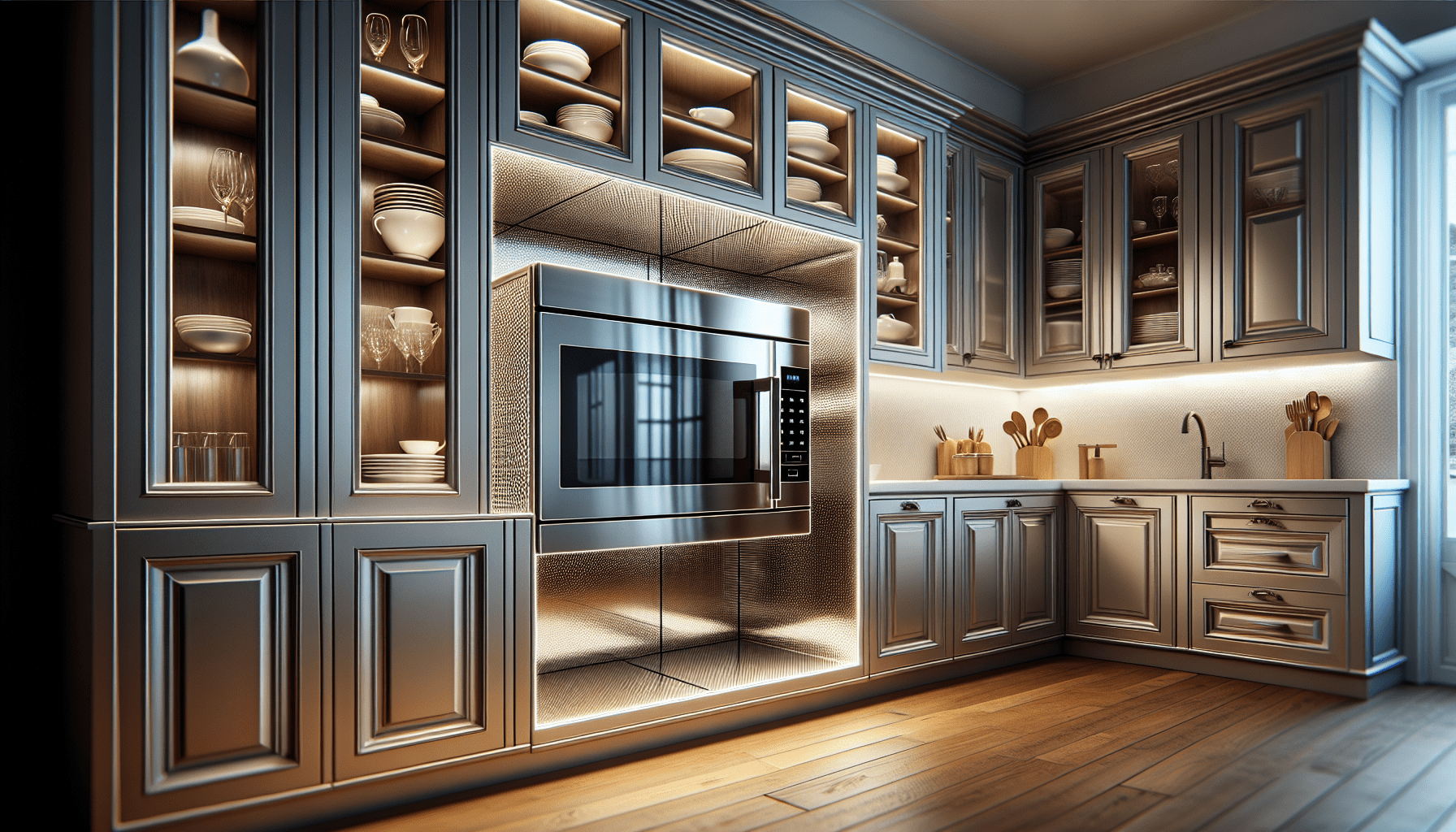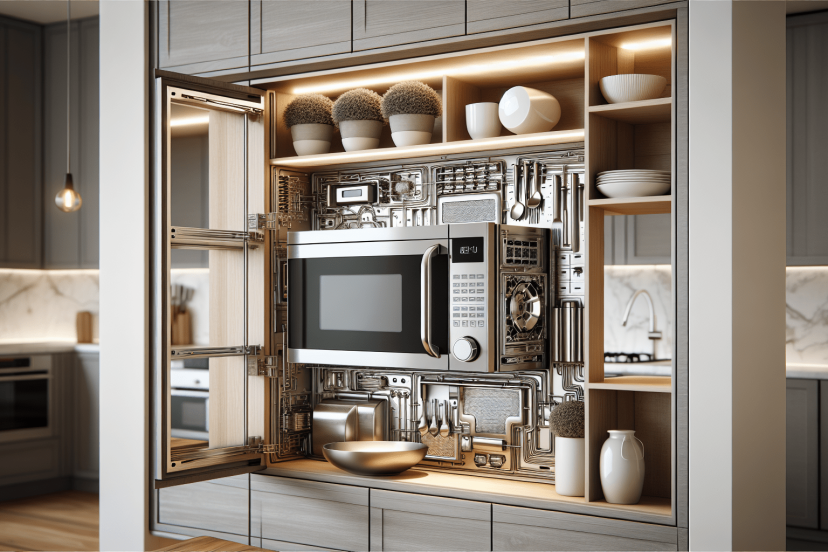Can Any Microwave Be A Built In?
Imagine the convenience of having a sleek and integrated microwave seamlessly incorporated into your kitchen design. The question that often arises is whether any microwave can be built-in, effortlessly enhancing both the functionality and aesthetics of your space. In this article, we will explore the possibilities and considerations when it comes to installing a built-in microwave, helping you make an informed decision that suits your needs and style.
Compatibility of Microwaves for Built-in Installation
If you’re considering upgrading your kitchen and want to create a sleek, seamless look, you may be wondering if any microwave can be a built-in appliance. built-in microwaves are a popular choice for homeowners who value both functionality and aesthetics. In this comprehensive article, we will explore the compatibility of microwaves for built-in installation, discussions about different types and brands of built-in microwaves, the installation process, cost considerations, alternatives, tips for choosing the right microwave, the pros and cons of built-in microwaves, and how to maintain and clean them. By the end of this article, you will have a clear understanding of whether a built-in microwave is the right choice for your kitchen.
Built-in Microwaves vs. Countertop Microwaves
Before diving into the specifics of built-in microwaves, let’s briefly touch on the key differences between built-in microwaves and their countertop counterparts. Countertop microwaves are freestanding appliances that sit on a countertop or a separate microwave cart. They are versatile and easy to install, making them a popular choice for those who rent or frequently move.
In contrast, built-in microwaves are designed to be seamlessly integrated into your cabinetry or wall, offering a more cohesive and polished look in your kitchen. Built-in microwaves are generally more powerful and provide additional features that cater to the needs of serious cooks. However, it’s important to note that not all microwaves can be built-in appliances – compatibility is key.

Standard Sizes for Built-in Microwaves
When it comes to built-in microwaves, size matters. To ensure a proper fit and installation, it’s important to consider the standard sizes available in the market. Built-in microwaves typically come in three standard widths: 24 inches, 27 inches, and 30 inches. The height and depth may vary depending on the model and brand. It is crucial to measure your available space accurately and confirm the dimensions of the microwave you are interested in to ensure compatibility.
Considerations for Built-in Microwave Installation
Installing a built-in microwave involves careful planning and consideration. Here are a few key factors to keep in mind when contemplating the installation process:
1. Selecting the Right Location for Installation
Choosing the right location for your built-in microwave is essential for both functionality and aesthetics. Consider factors such as proximity to other appliances, ease of access, and ventilation requirements. It’s important to ensure that there is enough clearance space around the microwave to prevent overheating and allow proper ventilation.
2. Preparing the Installation Space
Before starting the installation, you’ll need to prepare the designated area. This may involve removing any existing cabinetry or creating a custom space for your built-in microwave. Ensure that the area is clean and free of any debris or obstructions that could interfere with the installation process.
3. Mounting the Microwave
Proper mounting is crucial to ensure the stability and safety of your built-in microwave. Follow the manufacturer’s instructions carefully and use appropriate mounting brackets or hardware. If you are unsure about the process, it is best to consult a professional for assistance to avoid any potential risks or damage.
4. Connecting the Microwave to Power
Once the microwave is securely mounted, it’s time to connect it to a power source. Ensure that you follow local electrical codes and consult a licensed electrician if needed. It’s important to handle electrical connections safely to prevent any accidents or damage to the microwave.

Built-in Microwave Features
Built-in microwaves come with a range of features and options to enhance your cooking experience. Let’s explore a few notable features commonly found in built-in microwaves:
1. Built-in Trim Kits
To achieve a seamless installation, many built-in microwaves come with trim kits. These kits provide you with the necessary components to blend the microwave into your cabinetry or wall, creating a unified look. Trim kits are available in various finishes to match your kitchen’s style, from stainless steel to black or white.
2. Built-in Microwave Drawers
Built-in microwave drawers offer a unique and convenient alternative to traditional microwave placement. Rather than having a microwave above the countertop, microwave drawers can be installed below the countertop or in a kitchen island. They provide easy access, ergonomic use, and can be seamlessly integrated with your cabinetry for a streamlined appearance.
3. Sensor Cooking Technology
Many built-in microwaves now come equipped with advanced sensor cooking technology. This feature uses sensors to detect the humidity levels in your food and automatically adjusts the cooking time and power levels accordingly. Sensor cooking takes the guesswork out of achieving perfectly cooked meals by ensuring even heating and preventing overcooking or undercooking.
Brands Offering Built-in Microwaves
Now that we have explored the features and considerations for built-in microwaves, let’s dive into some notable brands that offer a range of options to meet your needs:
1. Sleek Designs by Samsung
Samsung is known for its cutting-edge technology and stylish designs, and their built-in microwaves are no exception. With sleek lines, innovative features, and user-friendly interfaces, Samsung microwaves can elevate the aesthetics of your kitchen while delivering reliable performance.
2. Luxury Options from Thermador
For those seeking high-end appliances with premium features, Thermador offers a range of luxury built-in microwaves. These microwaves not only provide exceptional cooking capabilities but also integrate seamlessly with other Thermador appliances, creating a cohesive and sophisticated kitchen design.
3. High-quality Choices from KitchenAid
KitchenAid is a trusted name in the kitchen appliance industry, and their line of built-in microwaves showcases their commitment to quality and craftsmanship. With a variety of sizes and features to choose from, KitchenAid microwaves offer versatility and durability, making them a popular choice among homeowners.
Cost and Considerations
When considering a built-in microwave, it’s important to factor in the cost and additional considerations beyond the initial purchase. Here are a few things to keep in mind:
1. Higher Price Range for Built-in Microwaves
Built-in microwaves tend to be more expensive compared to their countertop counterparts. The additional features, design elements, and integration options contribute to the higher price range. It’s important to set a budget and explore different brands and models within your price range to find the best option for your needs.
2. Additional Costs for Installation
In addition to the cost of the microwave itself, you’ll need to consider the cost of installation. If you are confident in your DIY skills, you may be able to handle the installation on your own. However, if you are unsure or the installation requires complex modifications, it is recommended to hire a professional installer. Their expertise can ensure a safe and secure installation.
3. Considering Long-Term Benefits
While the upfront cost of a built-in microwave may be higher, it’s important to consider the long-term benefits it offers. Built-in microwaves can increase the value of your home and provide a seamless look that enhances the overall aesthetics of your kitchen. Additionally, the advanced features and durability of built-in microwaves can make them a worthwhile investment for serious cooks.
Alternatives to Built-in Microwaves
If a built-in microwave doesn’t fit your needs or budget, there are alternative options that can still offer functionality and style. Here are a few alternatives to consider:
1. Over-the-Range Microwaves
Over-the-range microwaves combine a microwave and ventilation system in one unit. They are designed to be installed above your range or cooktop, making efficient use of space. While not as seamless as built-in microwaves, they offer convenience and eliminate the need for a separate range hood.
2. Microwave Drawers
As mentioned earlier, microwave drawers provide a sleek and ergonomic alternative to traditional microwave placement. By installing a microwave drawer in a base cabinet or kitchen island, you can achieve a clutter-free countertop and a streamlined look.
3. Countertop Convection Microwaves
Countertop convection microwaves offer the functionality of a microwave with the added benefit of convection cooking. These appliances combine microwave technology with convection heating, allowing you to bake, roast, and grill in addition to basic microwave functions. Countertop convection microwaves are versatile and can be easily moved or replaced as needed.
Tips for Choosing a Built-in Microwave
Choosing the right built-in microwave for your kitchen requires careful consideration. Here are a few tips to help you make the best decision:
1. Assessing Your Cooking Needs
Consider your cooking habits and the specific features you require in a microwave. Are you an avid cook who needs advanced cooking functions? Do you frequently cook for a large family, requiring a roomy interior? By assessing your needs, you can prioritize features that are most important to you.
2. Matching the Microwave with Other Kitchen Appliances
If you have other kitchen appliances from a specific brand or collection, you may want to consider a built-in microwave that matches the aesthetic of your existing appliances. This ensures a cohesive and unified look in your kitchen.
3. Considering Design and Aesthetics
Built-in microwaves come in various designs, finishes, and styles. Consider the overall design scheme of your kitchen and choose a microwave that complements the existing decor. Whether you prefer a modern and sleek design or a more traditional look, there are options available to suit your style.
Pros and Cons of Built-in Microwaves
While built-in microwaves offer many benefits, it’s important to weigh the pros and cons before making a decision. Here are a few key points to consider:
1. Space-Saving and Streamlined Design
One of the major advantages of built-in microwaves is their space-saving design. By integrating them into your cabinetry or wall, you free up valuable counter space and create a streamlined look in your kitchen. This is especially beneficial for smaller kitchens where every inch of space matters.
2. Improved Aesthetics
Built-in microwaves contribute to the overall aesthetics of your kitchen by providing a seamless and integrated look. They blend seamlessly with your cabinetry and create a cohesive design that adds value to your home. For those who value a polished and sophisticated kitchen, built-in microwaves are an excellent choice.
3. Potential Limitations of Built-in Microwaves
While built-in microwaves offer many advantages, there are a few potential limitations to be aware of. One common concern is the cost – built-in microwaves are generally more expensive than countertop models. Additionally, the installation process may require professional help or complex modifications, adding to the overall cost. It’s important to consider these factors before committing to a built-in microwave.
Maintaining and Cleaning Built-in Microwaves
Once you have chosen and installed your built-in microwave, proper maintenance and cleaning are essential to keep it running smoothly and looking its best. Here are a few tips for maintaining and cleaning your built-in microwave:
1. Regular Cleaning Routine
Establishing a regular cleaning routine for your built-in microwave will help keep it in optimal condition. Wipe down the interior after each use to remove any spills or splatters. Additionally, clean the turntable, racks, and other removable accessories regularly using mild soapy water.
2. Dealing with Spills and Splatters
Accidents happen, and spills or splatters inside the microwave are inevitable. If you notice any spills or splatters, remove them promptly to prevent staining or odors. Use a microwave-safe cleaner or a mixture of vinegar and water to tackle stubborn stains or stuck-on food.
3. Cleaning the Exterior and Accessories
The exterior of your built-in microwave requires regular cleaning to maintain its appearance. Use a soft, microfiber cloth and a mild cleaning agent to wipe down the exterior surfaces. Avoid using abrasive cleaners or scrubbing pads that can damage the finish. Don’t forget to clean the control panel and buttons as well.
Conclusion
In conclusion, the compatibility of microwaves for built-in installation depends on several factors such as size, design, and specific features. While not all microwaves can be built-in appliances, there is a wide range of options available in the market to suit various needs and budgets. By considering the information provided in this article and conducting thorough research, you can determine whether a built-in microwave is the right choice for your kitchen. With the features, advantages, and maintenance tips covered, you can now confidently explore the world of built-in microwaves and elevate your culinary experience.




